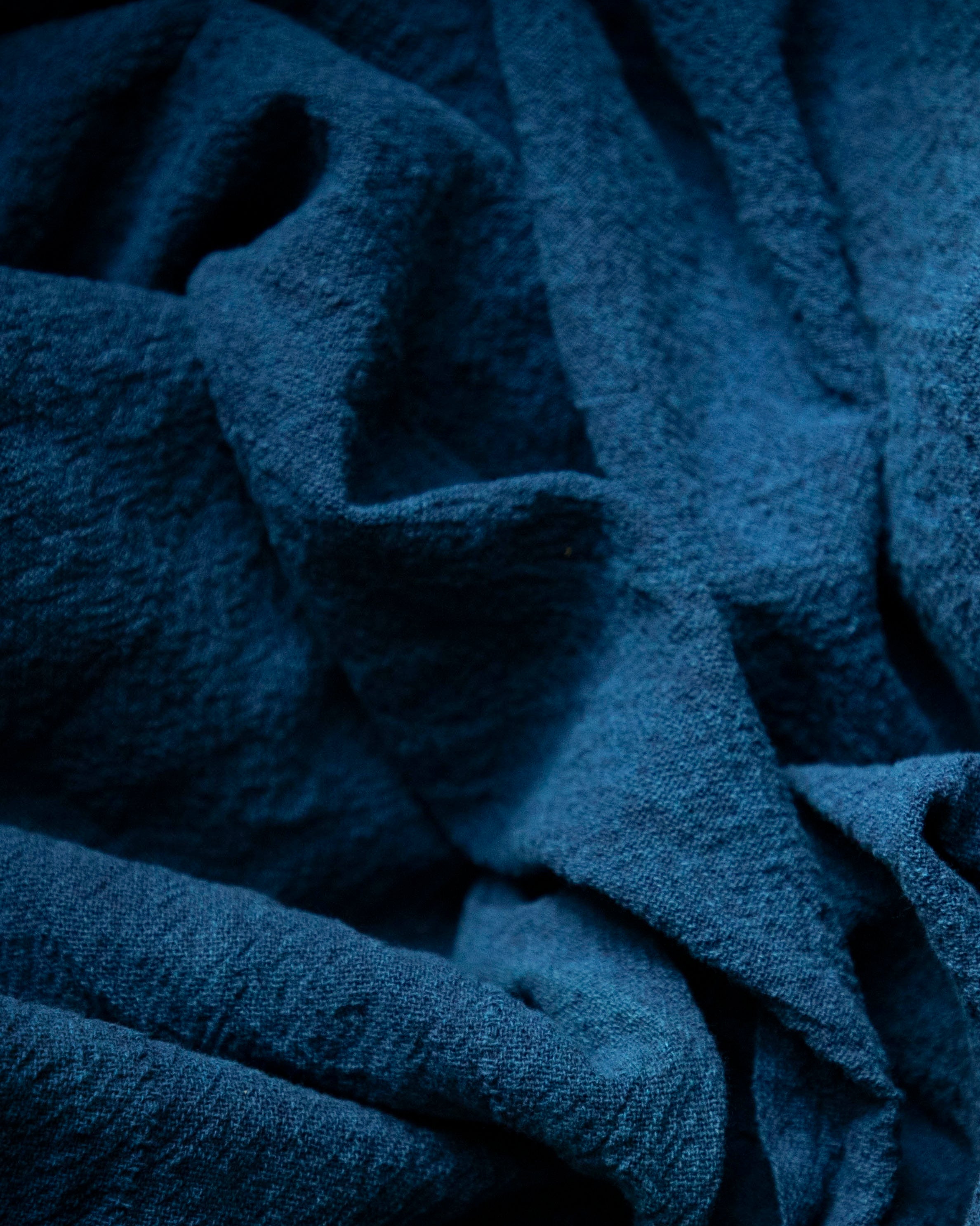The vibrant colors in our textiles carry a hidden story. Beneath their colorful exterior lies a troubling legacy of environmental harm and health risks. The textile industry’s reliance on synthetic chemicals to dye fabrics has significantly impacted ecosystems and human well-being. From the hazardous working conditions of textile factories to the chemically laden garments we wear, this issue demands attention. Let’s dive into what’s really in conventional textile dyes, how they affect us, and the sustainable solutions that could change the game for good.
The Most Toxic Chemicals in Conventional Textile Dyeing
 Ecotoxicology and Environmental Safety, Volume 231, 2022, 113160, ISSN 0147-6513
Ecotoxicology and Environmental Safety, Volume 231, 2022, 113160, ISSN 0147-6513
1. Azo Dyes
Azo dyes account for up to 80% of all synthetic dyes used today. Known for their vivid, long-lasting colors, these dyes have a darker side. They release aromatic amines, chemical compounds classified as carcinogens. Shockingly, studies estimate that 20% of global industrial water pollution stems from the production and treatment of textiles, with azo dyes being a primary culprit.
2. Formaldehyde
Formaldehyde is a volatile organic compound often used to make fabrics wrinkle-free and colorfast. However, it is a serious health hazard. The World Health Organization (WHO) reports that workers exposed to formaldehyde-based dyes are at risk of respiratory conditions and skin irritation. These risks highlight the urgent need for safer alternatives that protect both people and the environment.
3. Heavy Metals
Heavy metals like lead, mercury, cadmium, and chromium play a significant role in textile dyeing processes. Chromium VI, commonly used in dye fixation, is an especially dangerous carcinogen. Wastewater from factories laced with these metals persists in the environment for years, causing compounded harm to ecosystems as well as human health.
4. Organotin Compounds
Organotin compounds, including tributyltin (TBT) and dioctyltin (DOT), are often employed as stabilizers in dyeing and printing. Despite their functional benefits, these chemicals are linked to severe health issues, such as endocrine disruption and immune system disorders. Alarmingly, even trace amounts can disrupt hormonal systems in both humans and wildlife.
5. Chlorobenzenes
Chlorobenzenes act as carriers for synthetic dyes. They can accumulate in the liver and thyroid, leading to chronic diseases. Long-term exposure increases the risk of liver damage and central nervous system disorders, further emphasizing the need for safer, sustainable dyeing practices.

Ecotoxicology and Environmental Safety, Volume 231, 2022, 113160, ISSN 0147-6513
The Environmental Impact of Toxic Textile Dyes:
Water Pollution and Ecosystem Damage
Producing one ton of dyed fabric can consume 100 to 200 tons of water. Often, this water, laden with hazardous chemicals, is dumped untreated into rivers and streams, polluting clean water sources. Studies reveal that up to 90% of the water used in these processes is discharged without filtration.
Rivers near industrial zones have become lifeless dumping grounds, with dye effluents depleting oxygen levels and decimating aquatic wildlife. The cascading damage impacts not just biodiversity but entire communities that rely on these water ecosystems. Textile dyeing alone is responsible for 20% of global industrial water pollution, according to the UN.

A Path Toward Sustainability
The textile industry's dependence on chemical dyes has long been a source of environmental harm, contributing significantly to wastewater pollution, carbon emissions, and toxic waste. Thankfully, a movement toward eco-friendly alternatives is gaining momentum, offering sustainable solutions that benefit both the planet and its people.

Natural and Plant-Based Dyes: THE GOLD STANDARD
Natural dyes are often regarded as the gold standard in sustainable colorants, seamlessly blending art, science, and environmental stewardship. Sourced from plants, minerals, and other renewable natural materials, these dyes are non-toxic, biodegradable, and leave a minimal ecological footprint. Beyond being environmentally friendly, research shows these natural dyes can even offer benefits to the wearer. For example, pigments like turmeric and walnut are known for their antimicrobial properties, which promote healthier skin.
A 2020 study published in the Journal of Environmental Psychology found that participants surrounded by or wearing textiles dyed naturally reported reduced stress levels. This calming effect was attributed to the organic and soothing aesthetic qualities of the colors produced by natural dyes.
For over a decade, we have been dedicated to celebrating and promoting the beauty and brilliance of natural dyes, championing their ability to transform textiles into sustainable works of art.

Digital Textile Printing
Digital textile printing is transforming the industry with its eco-conscious efficiency. This innovative method directly applies designs to fabric, drastically reducing the water and energy required by traditional dyeing methods. Many digital printers now use water-based, chemical-free inks, minimizing waste while achieving vibrant, high-quality results.
Low-Reactive Dyes and Certifications
Low-reactive dyes are another step toward eco-friendly dyes. While not entirely free of chemicals, they greatly reduce health and environmental risks when used responsibly. Eco-certifications such as Oeko-Tex® Standard 100 and the Global Organic Textile Standard (GOTS) help ensure products using low-reactive dyes meet rigorous environmental and safety standards. These certifications also enable consumers to make informed, responsible choices.
A Future of Responsible Color
Celebrate color in a way that honors both nature and artistry. Eco-friendly alternatives like plant-based dyes and digital printing offer vibrant, sustainable options that minimize harm to people and the environment. With each mindful choice, you help champion innovation and sustainability, paving the way toward a safer, cleaner, and more beautiful world for future generations.

Your commitment today makes a difference for tomorrow. Together, we can weave a brighter, more sustainable story for color in textiles.


